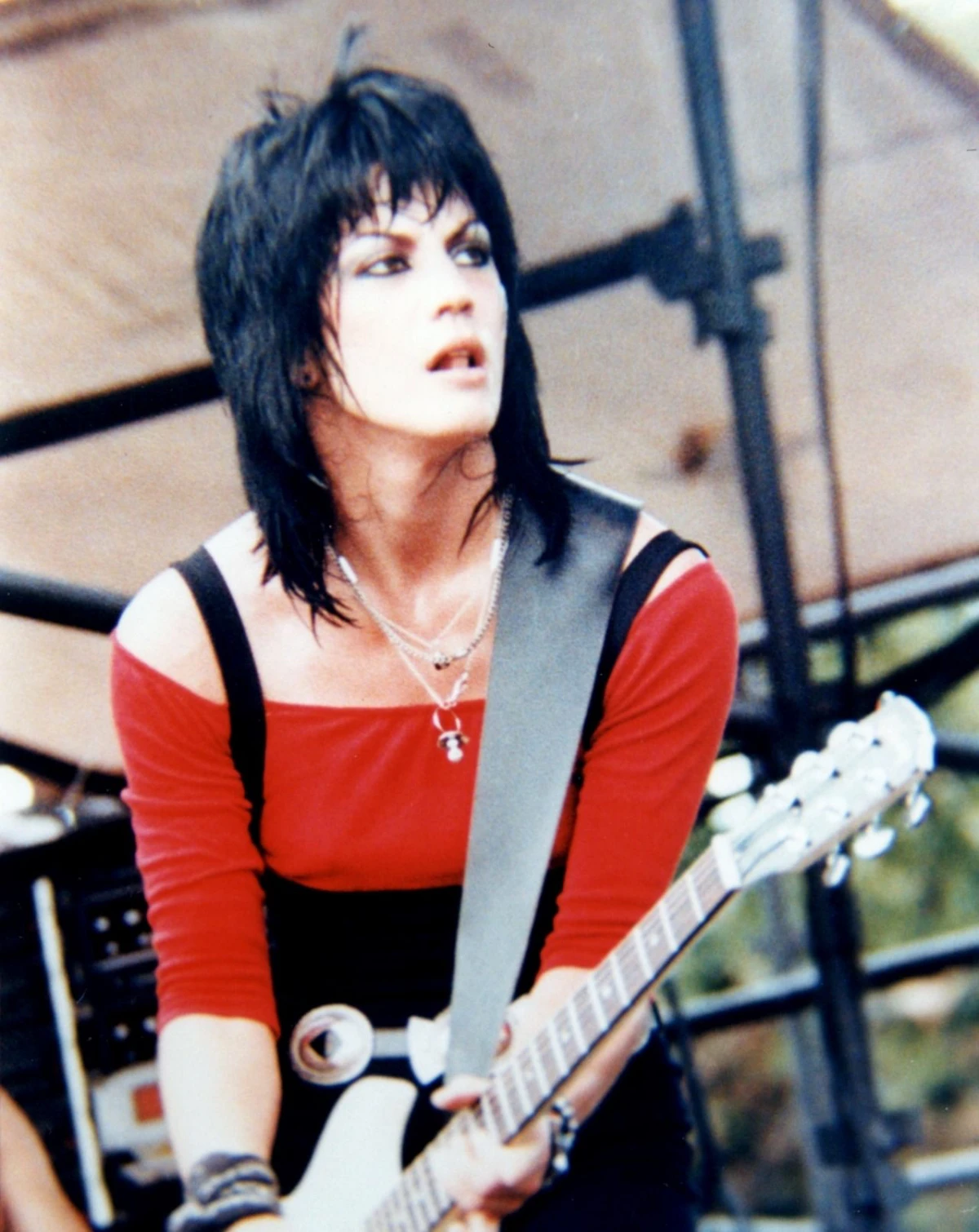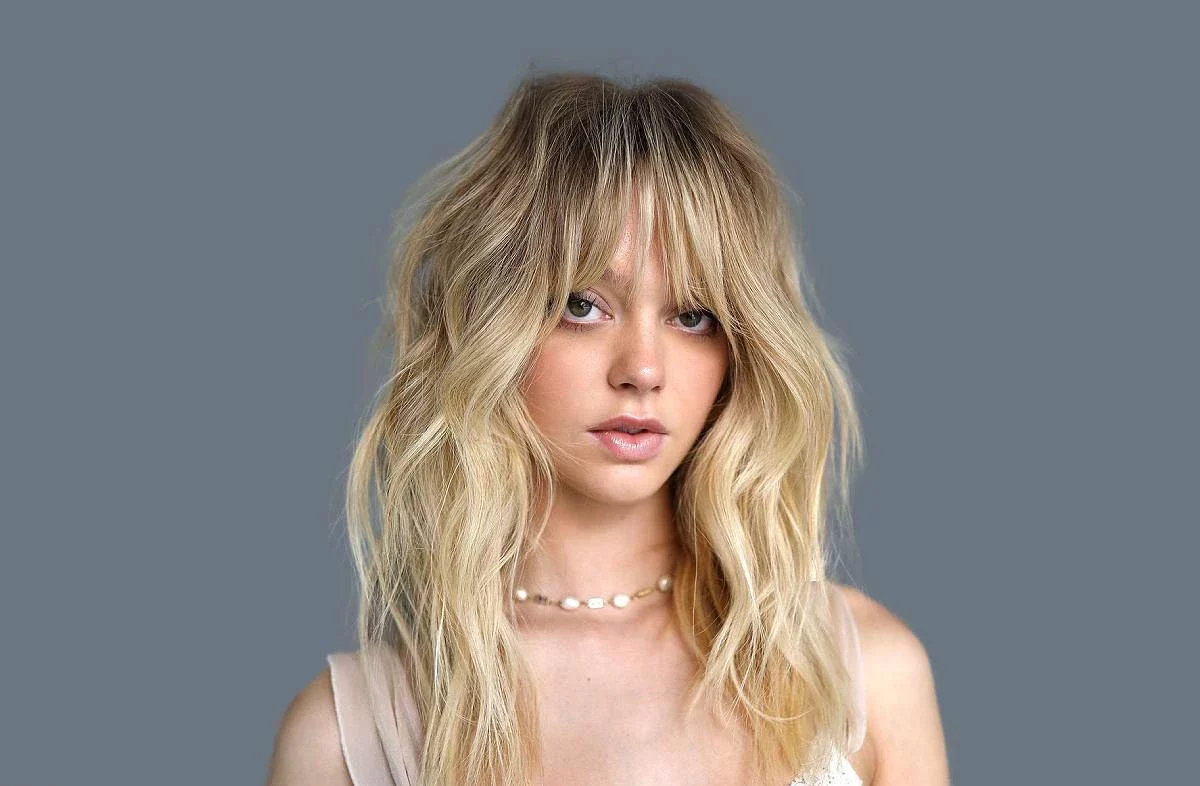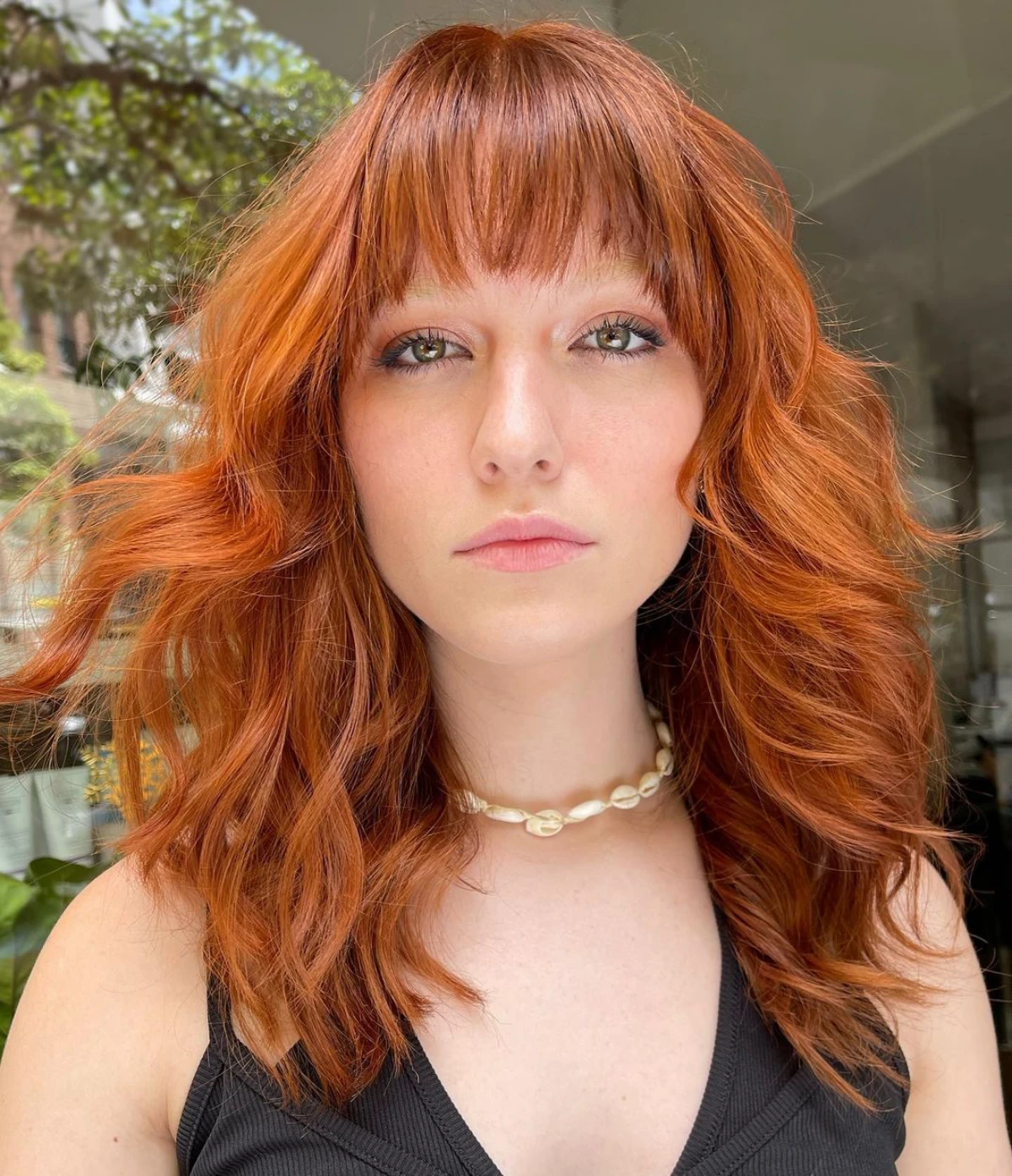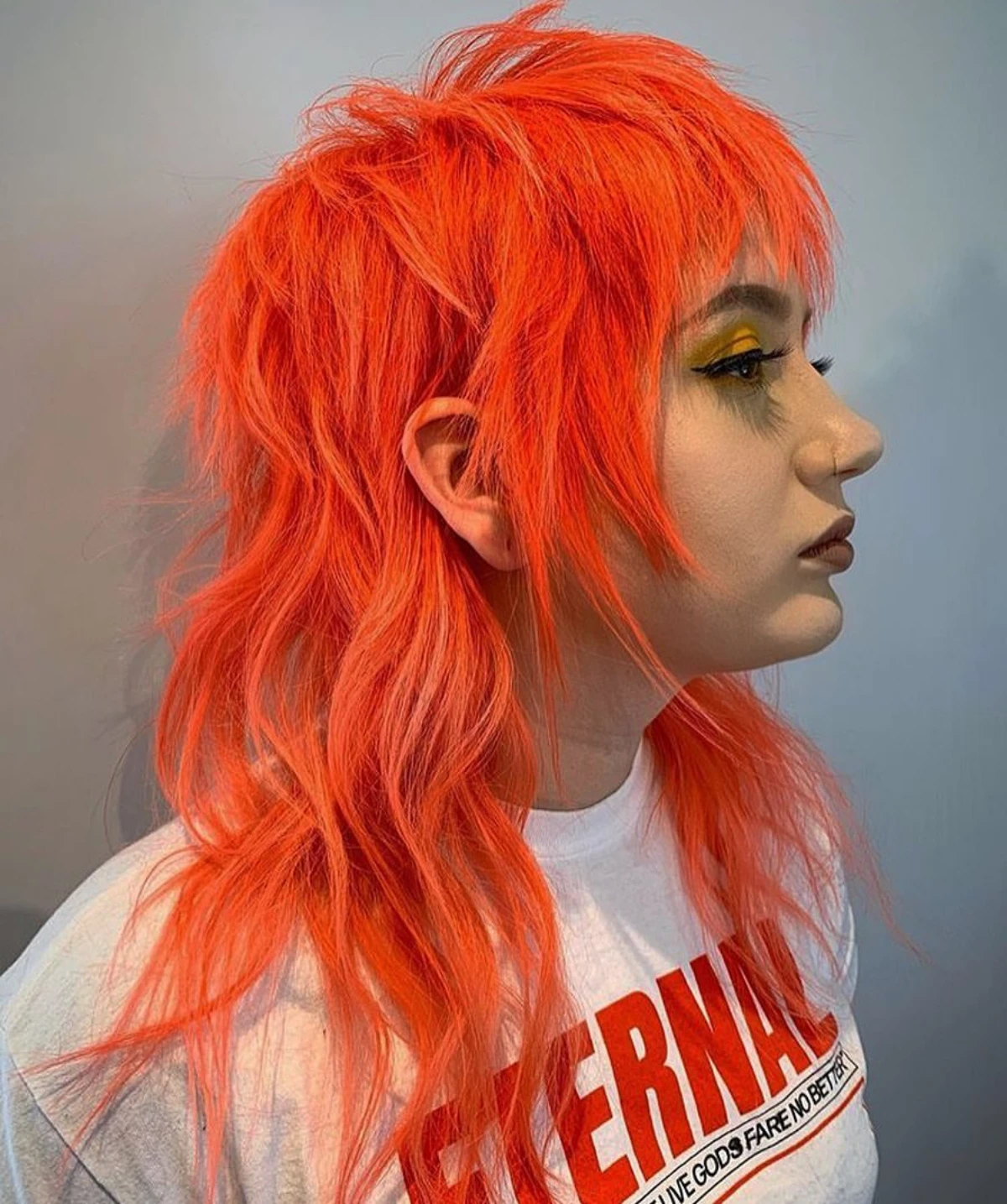Thinking About a Shag Haircut? Here’s the Honest Truth
I’ve been behind the salon chair for a long, long time, and I’ve seen trends come and go. But the shag… the shag is different. It has this incredible way of just sticking around, reinventing itself for a new generation but always keeping that core vibe of cool, effortless confidence. I’ve cut hundreds of them, and I’ve taught the technique to plenty of stylists. The first thing I always tell them is that a real shag isn’t just a messy haircut—it’s a carefully engineered shape.
In this article
So, this is for you if you’re genuinely curious about this iconic style. Whether you’re trying to decide if you should get one or you’re a new stylist wanting to get it right, I’m going to lay it all out. We’re going past the pretty inspiration photos and talking about structure, technique, and the real-deal realities of living with a shag. Think of this as the chat we’d have if you were in my chair.

First, Let’s Talk Physics (Seriously)
Before we even think about scissors, you have to get why a shag works. It’s all about weight. Imagine a simple, one-length cut. All the weight is at the bottom, creating a heavy, solid line. A standard layered cut chips away at that, but a shag plays a totally different game.
The whole point is to take out a ton of weight from the top and crown, while keeping length around the edges. This does two things at once: the shorter top layers are now free to create volume and movement, while the longer bottom pieces give you that classic shaggy frame. It’s a bit of controlled chaos, honestly. It goes against a lot of traditional hairdressing, which is all about building up heavy, solid shapes. That’s why a great shag requires a stylist who isn’t afraid to break the rules a little.
Is a Shag Actually a Good Idea for You?
This is where things get real. Forget what you’ve read about face shapes for a second. The number one thing that determines if a shag will look amazing or just… meh… is your hair’s natural texture and density.

Let’s Figure Out Your Hair Type
It’s the absolute most important factor. Stylists use codes, but here’s a simpler way to think about it:
- The Dream Canvas: If your hair has a natural wave or a loose curl, you’re the ideal candidate. Your hair already wants to do the work! The layers just encourage that beautiful, lived-in bend and movement with almost no effort. Medium to thick hair is also a huge plus, since there’s plenty of hair to play with without it looking thin.
- It Can Work, But…: Got super straight but really thick hair? You can pull off a shag, but you’ll have to commit to styling it. Without a little help from a blow dryer or product, the layers might just hang there looking choppy instead of blended. Some tighter curls also look incredible with a shag, but that’s a job for a true curl specialist.
- Proceed with Caution: Okay, here’s the tough love. Very fine, low-density, straight hair is the hardest to work with for this cut. When you take weight out of hair that’s already a bit sparse, it can end up looking stringy and thinner than before. Not sure if your hair is low-density? Try the ponytail test: pull all your hair back. If the circumference of your ponytail is less than about 2 inches, you likely have low-density hair and will have to be realistic about achieving big volume.

Your Lifestyle Matters, Too
The shag is often sold as “effortless.” That’s not the whole truth. It’s ‘effortless’ in that it’s not supposed to look perfect, but it absolutely requires some effort to look intentionally cool. If you are a true wash-and-go person who wants zero styling time, this cut might drive you nuts. You’ll need to make friends with a diffuser, a sea salt spray, or a texture cream. It’s a 5-minute commitment, but it is a commitment.
How to Find a Stylist Who Won’t Wreck Your Hair
Telling you to “find a stylist you trust” is useless if I don’t tell you how. This is probably the most important step.
First, do some online recon. Hop on Instagram and search hashtags like
[yourcity]shag,
[yourcity]haircutter, or #[yourcity]curlyspecialist. Don’t just look for pretty pictures—look for variety. Does the stylist’s feed show shags on different hair types, lengths, and people? Or is it the same model over and over? A versatile portfolio is a great sign.
Once you book a consultation (and you should always book one!), go in armed with the right questions. This is your interview. Here’s a little script:

- “I see you do a lot of shags. Can you tell me about your experience cutting them on hair like mine (wavy/fine/curly)?”
- “What’s your preferred tool for adding texture—a razor or shears? Why?” (A great stylist will have a clear, confident answer based on hair health).
- “What would a realistic maintenance and styling routine look like for me with this cut?”
Listen carefully to their answers. If they seem dismissive or promise you a no-effort style when you have challenging hair, that’s a red flag. And let’s talk money. A good shag isn’t a budget haircut. It’s a technical skill. Depending on your city and the stylist’s expertise, expect to pay anywhere from $90 to over $250. This is NOT a job for a quick-service chain salon.
A Peek Behind the Chair: The Cutting Process
When a stylist first learns the shag, it feels weird. You have to let go of making everything perfectly blended. But in experienced hands, every snip is deliberate.

The Tools for the Job
We mainly use three things:
- Shears (Scissors): The workhorse for setting the length and the main layers.
- Texturizing Shears: Those scissors with teeth. They’re amazing for taking out inner bulk on thick hair so the cut doesn’t look like a helmet.
- The Razor: This is how you get those super soft, wispy edges. A pro uses a guarded feather razor, not an open blade.
Heads up! A critical note on razors. I cannot stress this enough: a razor is not for everyone. On strong, healthy hair, it’s beautiful. But on fine, color-damaged, or very fragile hair, a razor can shred the outer layer (the cuticle). This causes frizz and damage that’s impossible to fix. I’ve done so many corrective cuts on fried hair because an inexperienced stylist got happy with a razor. A good pro will assess your hair’s health first. If a razor isn’t right for you, they can get a similar look using advanced shear techniques like slide cutting.

The Art of the Cut
The process usually starts on wet hair to create the basic shape and finishes on dry hair to add the personality. We section the hair, often in triangular ‘pie’ sections on top, and establish a guide—the shortest piece that all other layers will be measured against. We use high elevation, pulling the hair straight out from the head, which is what creates those signature short-to-long layers.
But the real magic happens once the hair is dry. This is when we see how your hair truly wants to live. We’ll go back in and slide cut to create seamless movement, point cut into the ends to break up hard lines, and texturize internally to help the shape collapse and move just right.
Your At-Home Survival Kit & Daily Routine
A great cut is a team effort. I build the shape, you bring it to life every day. You don’t need a ton of products, just the right ones.

- A Diffuser: This is a non-negotiable attachment for your dryer if you have any wave at all. It dries your hair without blasting it into a frizzy mess.
- Sea Salt Spray: The fastest way to get that gritty, piecey, second-day texture. For a budget-friendly option, something like ‘Not Your Mother’s Beach Babe’ is about $7 at the drugstore. If you want to splurge, ‘Bumble and bumble’s Surf Spray’ is a salon classic for around $30.
- Mousse or Volumizing Foam: This is your best friend if you have finer hair. Put it on damp roots for lift and support.
- Finishing Cream or Pomade: Just a tiny, pea-sized amount. Rub it between your palms and use your fingers to twist and define the ends. It’s the detail that makes it look intentional.
And that 5-minute styling routine? It’s real. Here’s my go-to refresh: 1. Flip your head upside down. 2. Lightly mist damp hair with sea salt spray. 3. ‘Scrunch’ your hair up towards the scalp for 30 seconds to encourage waves. 4. Use your diffuser on low, cupping sections of hair for a minute or two until it’s about 80% dry. 5. Flip back up, give it a good shake, and use a dot of pomade to define a few ends. Done!

When Good Shags Go Bad (And How to Fix Them)
I’ve seen my share of shag-sasters. Here are the usual culprits.
- The Problem: “It looks like a helmet!” This happens when the layers are cut too bluntly and not blended. The fix involves going back in (on dry hair!) and using point cutting or slide cutting to soften those hard lines and connect the top to the bottom.
- The Problem: “My ends feel fried and frizzy.” This is almost always from improper razor use. The only fix, unfortunately, is time. You have to stop the damage, use deep conditioning treatments religiously, and get regular trims to slowly cut off the fried ends.
- The Problem: “It just hangs there with no volume.” This is common on super straight, fine hair. First, master your styling routine (mousse at the root is key!). Second, talk to your stylist about adding some hidden internal layers for support. And finally, be realistic—your shag will have a softer, sleeker vibe than one on thick, wavy hair, and that’s beautiful in its own right.
Ultimately, the shag is more than a hairstyle; it’s an attitude. It’s about embracing beautiful imperfection. It takes a stylist with a confident hand and a client who’s ready to play. When you get that combo right, you end up with a cut that feels less like something you’re wearing and more like a part of who you are.

Galerie d’inspiration


How do I get that perfectly ‘undone’ shag look at home?
The secret is in the product you choose, and it all depends on the vibe you’re after. It’s not about making hair stiff, but about encouraging its natural movement.
- For a soft, beachy feel: A sea salt spray is your best friend. It gives fine hair some grit and enhances natural waves without weighing them down. Lightly mist a product like Bumble and bumble’s Surf Spray onto damp hair and let it air-dry or use a diffuser.
- For edgy, piecey separation: Reach for a dry texturizing spray. This is the key to that rock-and-roll texture. It provides volume and hold while keeping the hair pliable. After drying, lift sections and spray Oribe’s Dry Texturizing Spray at the roots and mid-lengths for instant, modern volume.
The original shag haircut was created by barber Paul McGregor for Jane Fonda’s role in the 1971 film Klute.
That Oscar-winning performance launched more than just Fonda’s career; it launched an entire hair movement. While her choppy, layered cut defined the 70s, its rebellious DNA has been reinterpreted ever since. Think of the feathered wings of Farrah Fawcett, the glam-metal volume of Joan Jett, and the modern, hybrid ‘wolf cuts’ seen everywhere today. It’s a haircut that doesn’t just stay in style—it evolves.










